Abstract
Clostridium botulinum type E antigens prepared from washed cells by either Formalin treatment or heating at 100 C were used for immunizing rabbits. Agglutination tests showed that high levels of antibody were produced by both types of preparations. Flagellar antigens were highly strain-specific, whereas the somatic antigens were sufficiently similar to produce complete cross-agglutination. One toxigenic strain produced toxigenic and nontoxigenic progeny which were physiologically and antigenically identical in all other respects. Other nontoxigenic strains whose growth, physiological, and morphological characters were identical to type E and strains which had some physiological differences completely cross-agglutinated with type E strains via the somatic antigen. Neither type of antiserum agglutinated other clostridia against which they were tested except for C. acetobutylicum. This reaction seems to be due to a nonspecific anamnestic response and does not appear to be related to the immunizing strains. The nontoxigenic strains studied seem to have no greater antigenic differences from type E strains than the type E strains have from each other.
Full text
PDF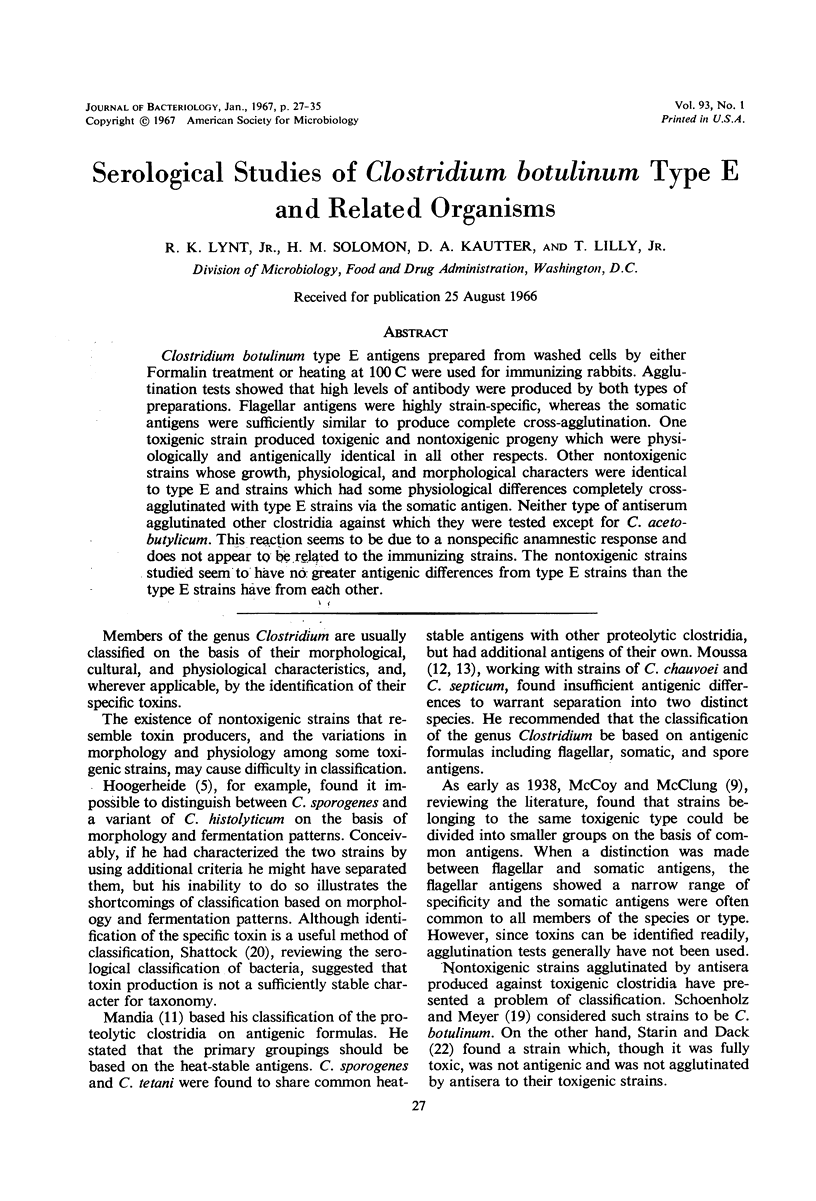
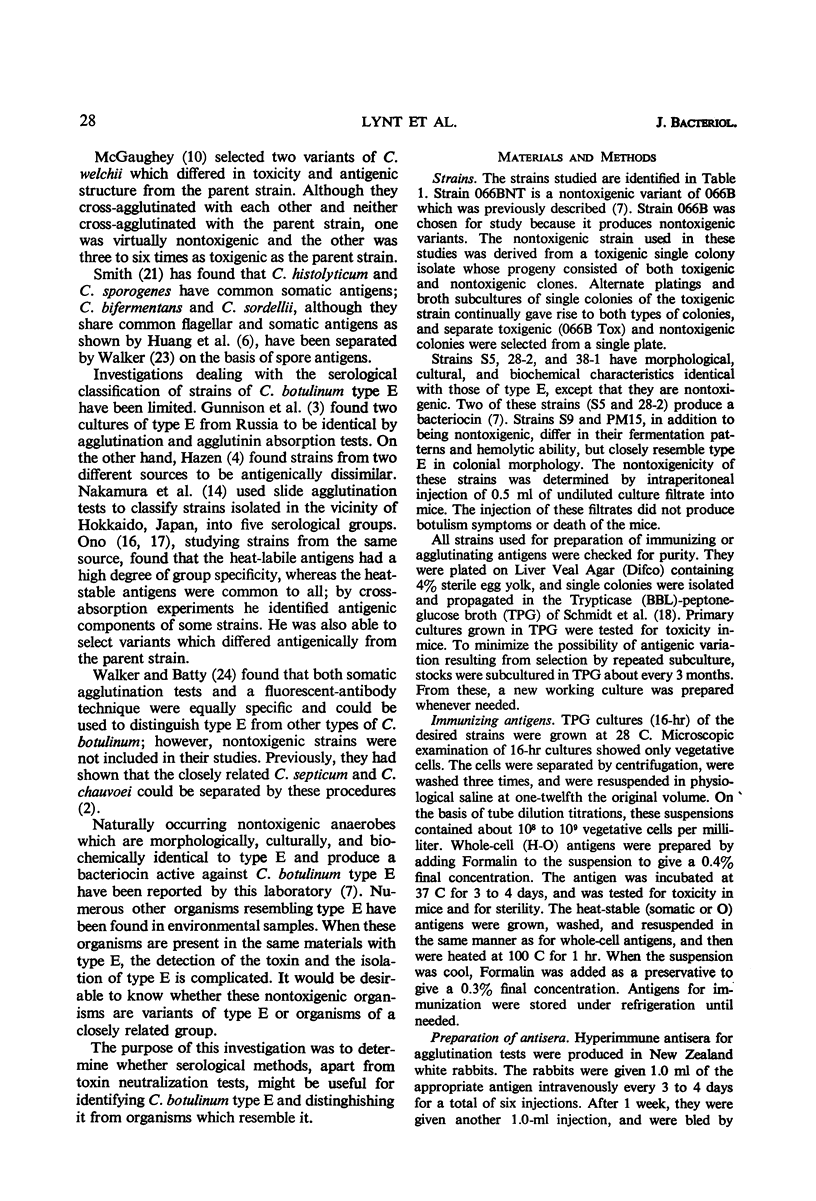
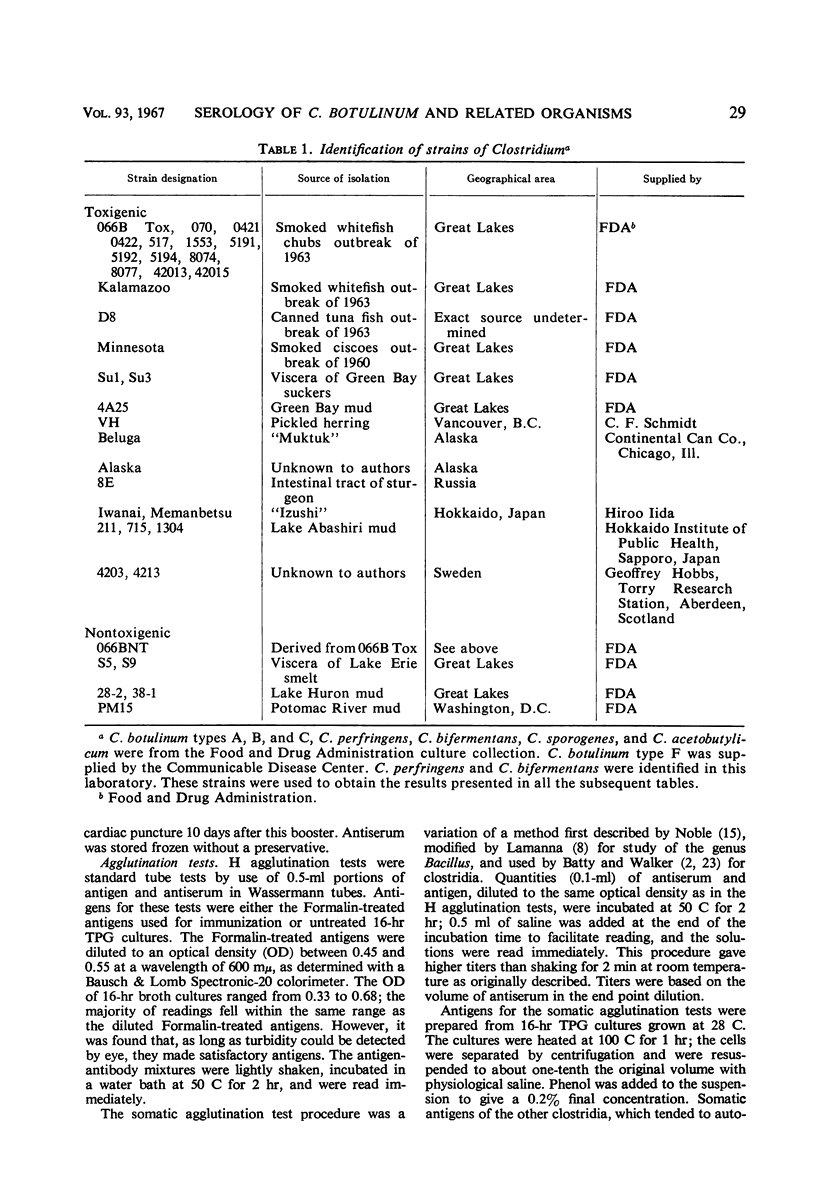
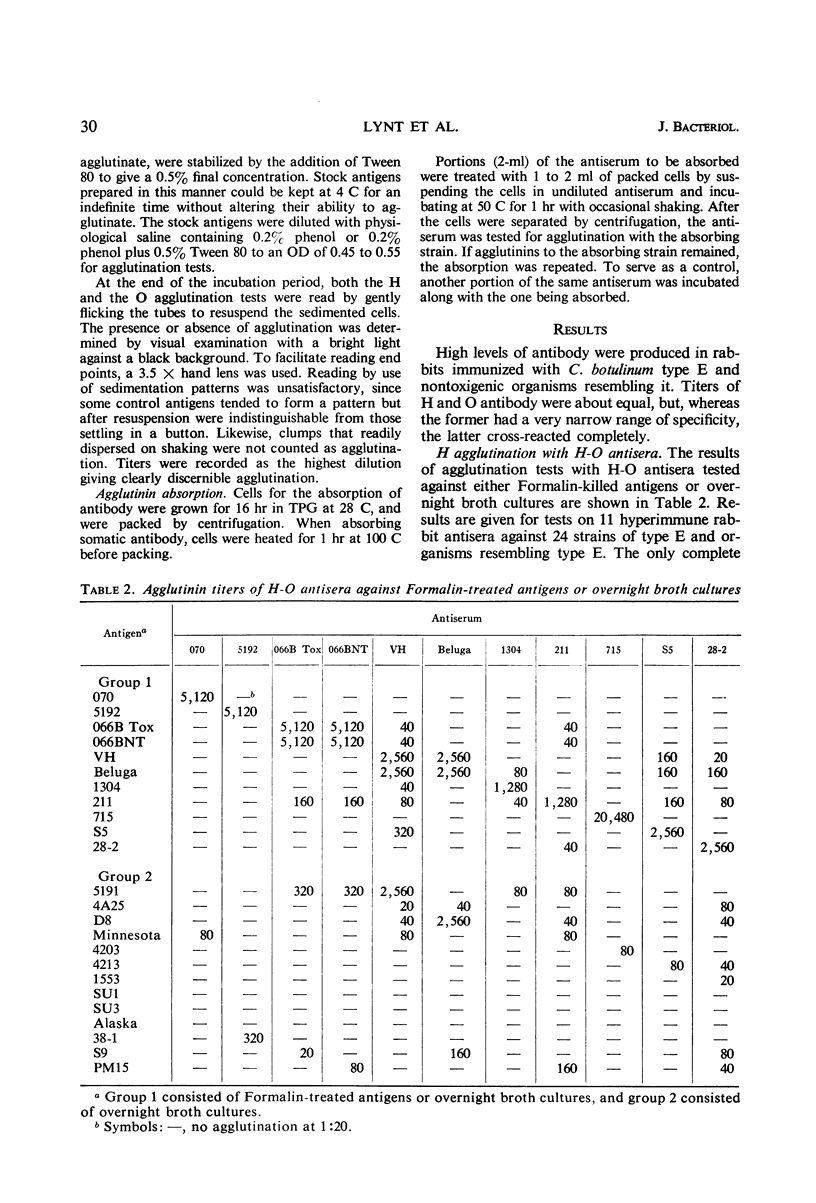
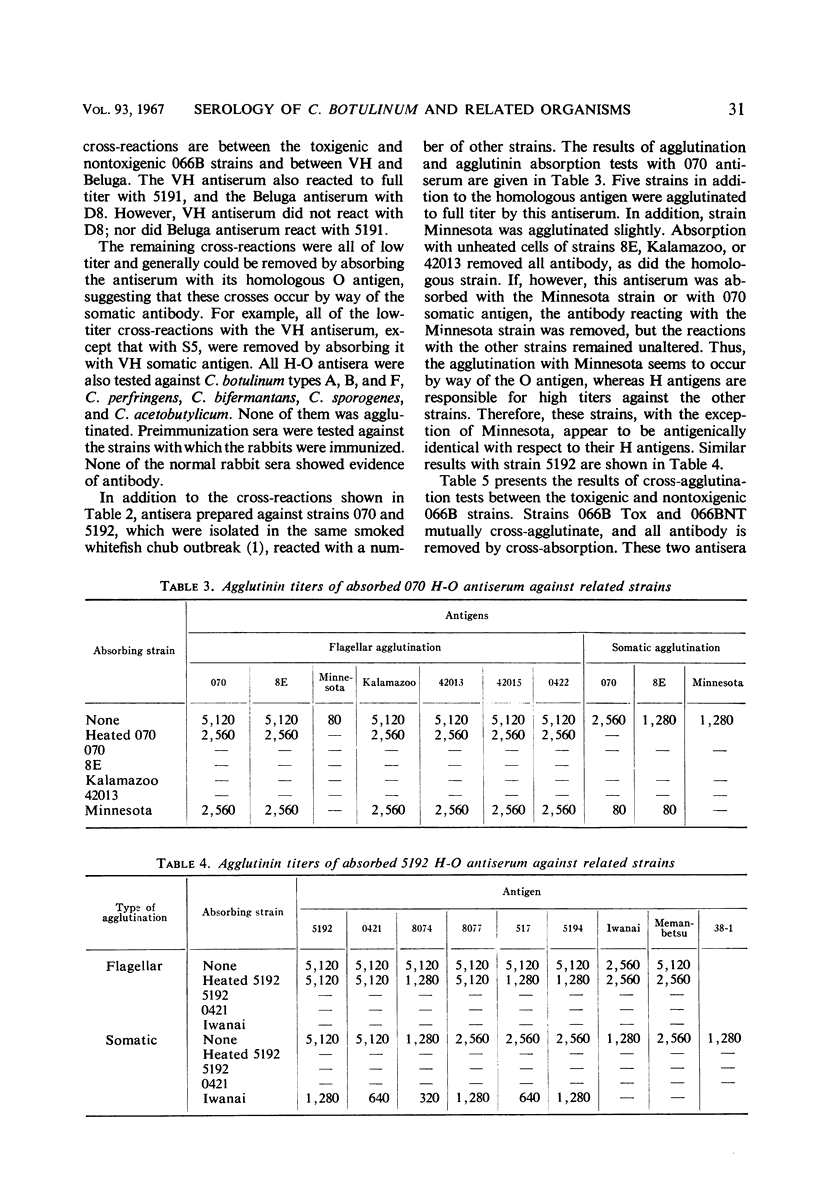
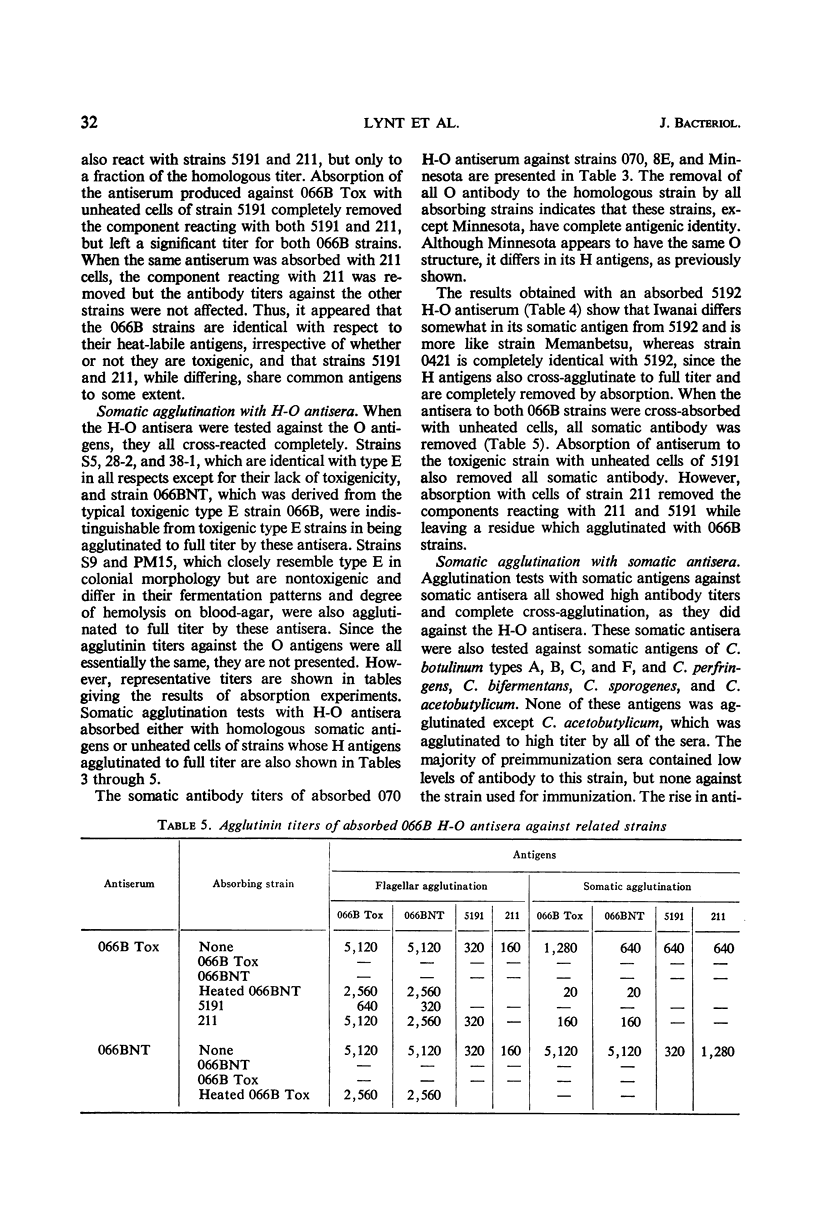
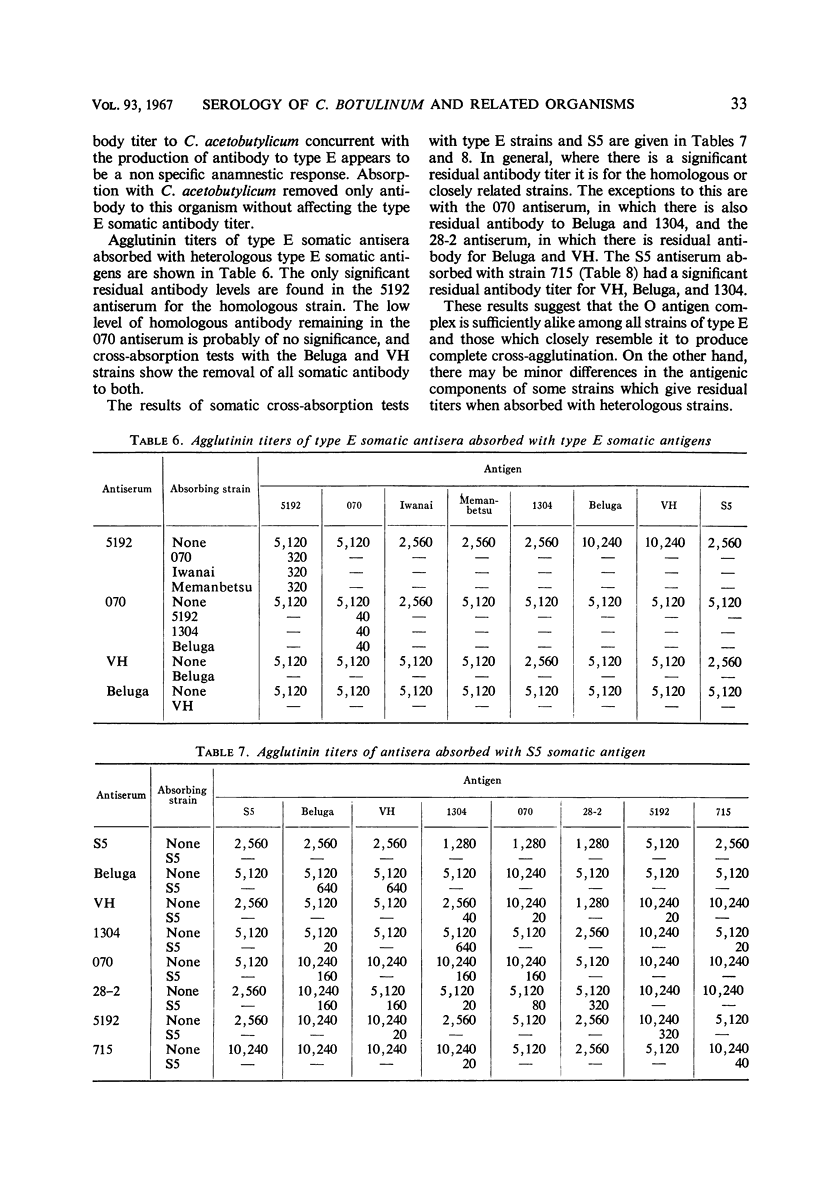
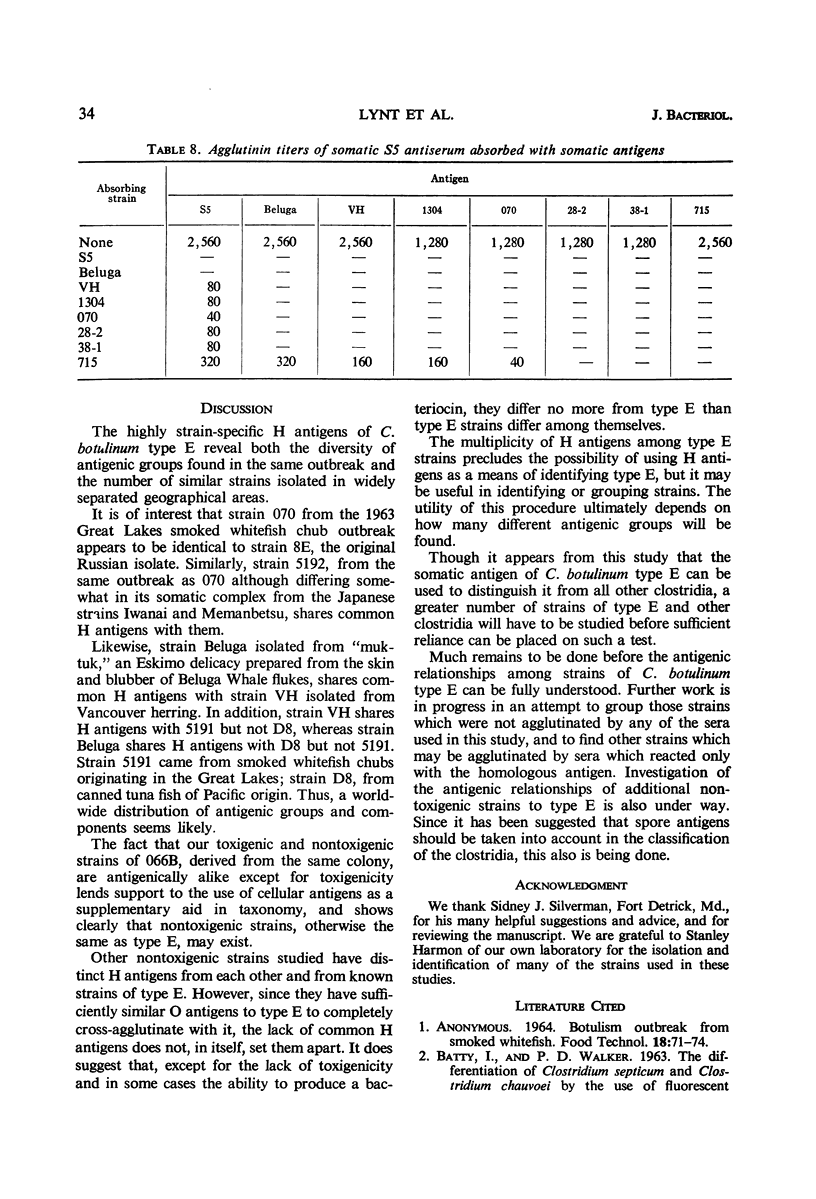
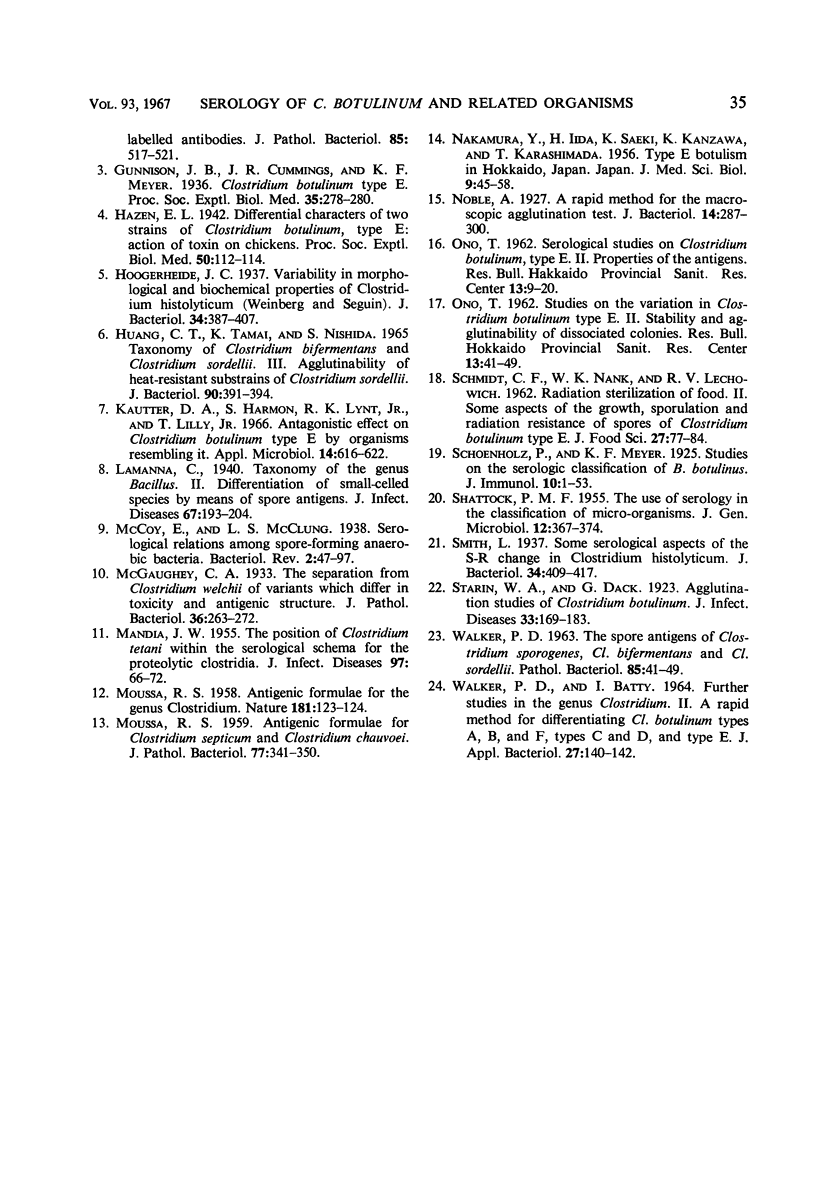
Selected References
These references are in PubMed. This may not be the complete list of references from this article.
- HUANG C. T., TAMAI K., NISHIDA S. TAXONOMY OF CLOSTRIDIUM BIFERMENTANS AND CLOSTRIDIUM SORDELLII. 3. AGGLUTINABILITY OF HEAT-RESISTANT SUBSTRAINS OFCLOSTRIDIUM SORDELLII. J Bacteriol. 1965 Aug;90:391–394. doi: 10.1128/jb.90.2.391-394.1965. [DOI] [PMC free article] [PubMed] [Google Scholar]
- Hoogerheide J. C. Variability in Morphological and Biochemical Properties of Clostridium histolyticum (Weinberg and Seguin). J Bacteriol. 1937 Oct;34(4):387–407. doi: 10.1128/jb.34.4.387-407.1937. [DOI] [PMC free article] [PubMed] [Google Scholar]
- Kautter D. A., Harmon S. M., Lynt R. K., Jr, Lilly T., Jr Antagonistic effect on Clostridium botulinum type E by organisms resembling it. Appl Microbiol. 1966 Jul;14(4):616–622. doi: 10.1128/am.14.4.616-622.1966. [DOI] [PMC free article] [PubMed] [Google Scholar]
- MANDIA J. W. The position of Clostridium tetani within the serological schema for the proteolytic clostridia. J Infect Dis. 1955 Jul-Aug;97(1):66–72. doi: 10.1093/infdis/97.1.66. [DOI] [PubMed] [Google Scholar]
- MOUSSA R. S. Antigenic formulae for Clostridium septicum and Clostridium chauvoei. J Pathol Bacteriol. 1959 Apr;77(2):341–350. doi: 10.1002/path.1700770204. [DOI] [PubMed] [Google Scholar]
- MOUSSA R. S. Antigenic formulae for the genus Clostridium. Nature. 1958 Jan 11;181(4602):123–124. doi: 10.1038/181123a0. [DOI] [PubMed] [Google Scholar]
- McCoy E., McClung L. S. SEROLOGICAL RELATIONS AMONG SPORE-FORMING ANAEROBIC BACTERIA. Bacteriol Rev. 1938 Jun;2(1):47–97. doi: 10.1128/br.2.1.47-97.1938. [DOI] [PMC free article] [PubMed] [Google Scholar]
- Noble A. A RAPID METHOD FOR THE MACROSCOPIC AGGLUTINATION TEST. J Bacteriol. 1927 Nov;14(5):287–300. doi: 10.1128/jb.14.5.287-300.1927. [DOI] [PMC free article] [PubMed] [Google Scholar]
- SHATTOCK P. M. F. The use of serology in the classification of micro-organisms. J Gen Microbiol. 1955 Apr;12(2):367–374. doi: 10.1099/00221287-12-2-367. [DOI] [PubMed] [Google Scholar]
- Smith L. Some Serological Aspects of the S-R Change in Clostridium histolyticum. J Bacteriol. 1937 Oct;34(4):409–417. doi: 10.1128/jb.34.4.409-417.1937. [DOI] [PMC free article] [PubMed] [Google Scholar]
- WALKER P. D. The spore antigens of Clostridium sporogenes, Cl. bifermentans and Cl. sordellii. J Pathol Bacteriol. 1963 Jan;85:41–49. doi: 10.1002/path.1700850105. [DOI] [PubMed] [Google Scholar]


